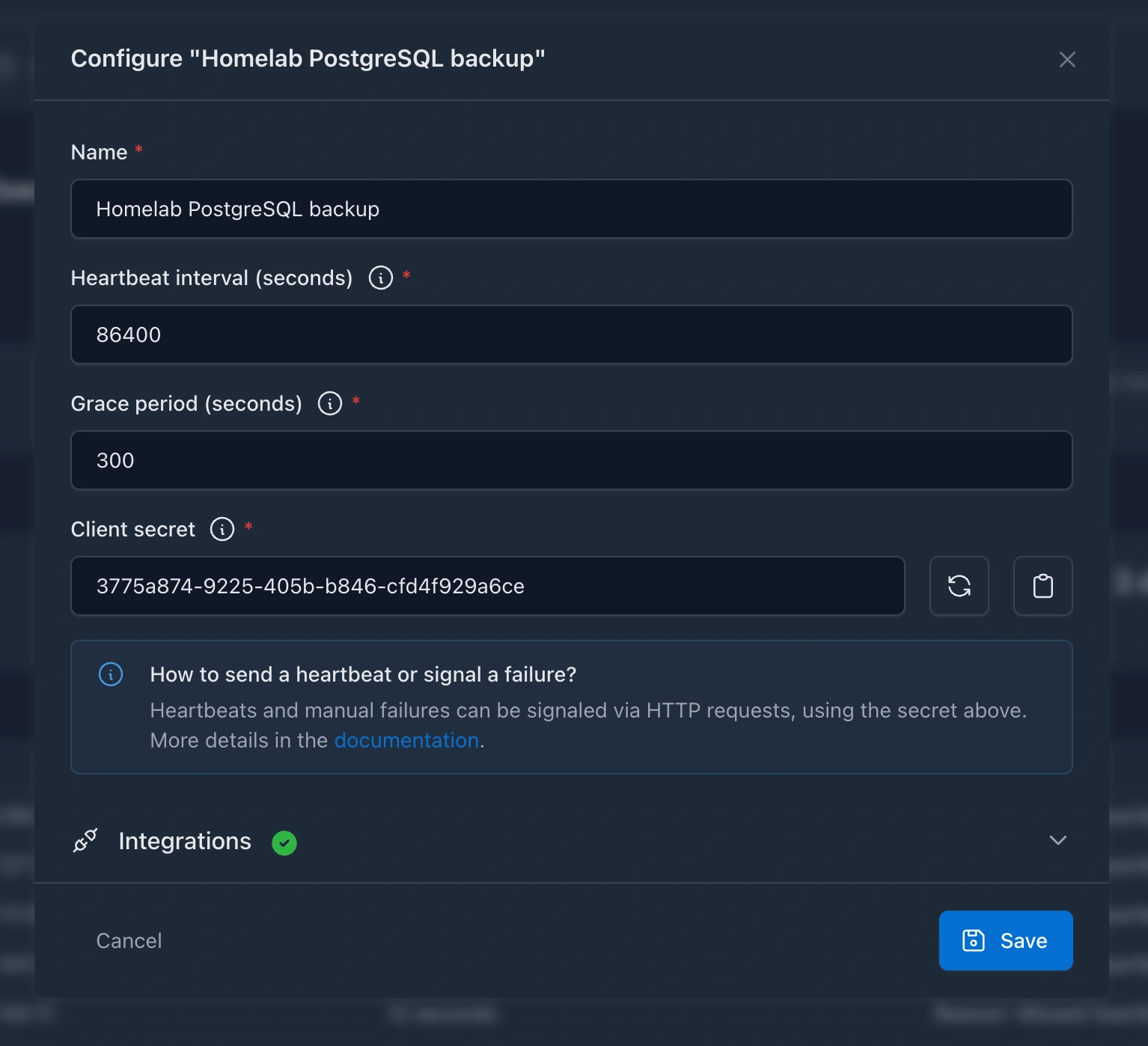Push monitoring
Push (or also known as "cron" or "heartbeat") monitoring allows you to monitor your services by sending HTTP requests to Kuvasz periodically. This is useful to monitor backups, or any other service that is not possible to monitor by sending an HTTP request to it.
How does it work?
You can set up your push monitors by specifying the following:
- a heartbeat interval which determines how often a heartbeat is expected to be sent from your service to Kuvasz
- a grace period which determines how long a heartbeat can be missed before an alert is triggered
- a unique and secure client secret that identifies your monitor and which will be used in the requests when your services signal a heartbeat or an explicit failure
The heartbeat interval and grace period are both specified in seconds.
Kuvasz will then check every push monitors every 5 seconds to see if a heartbeat has been missed. Only monitors with an already received heartbeat will be evaulated, since otherwise it would be impossible to determine if the next heartbeat was missed or not.
You can find more details in the Managing push monitors section of the documentation.
Example
If you specify a heartbeat interval of 60 seconds and a grace period of 10 seconds, and the first (or previous) heartbeat was received at 17:50:10, then the next heartbeat is expected until 17:51:20 (60 + 10 seconds after the previous heartbeat).
Sending heartbeats / signaling failures
You can send heartbeats or even signal explicit failures by sending a POST or GET request to the right endpoints using your client secret. More details can be found here.
Configuration
Please refer to the Managing push monitors section of the documentation for more information on how to configure push monitoring.
